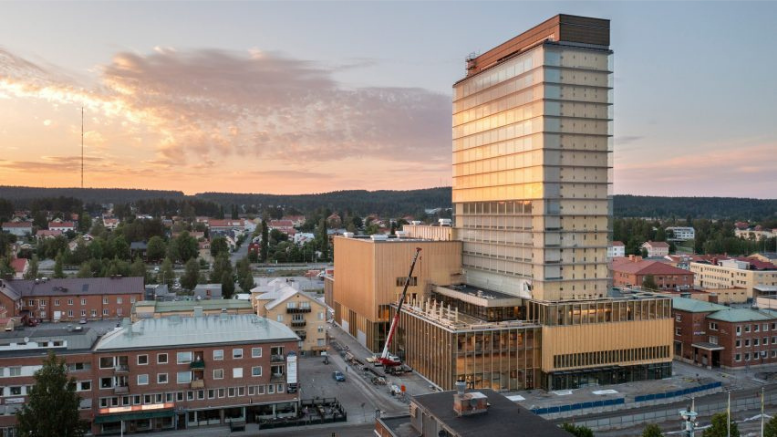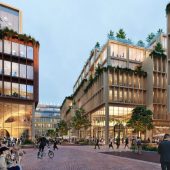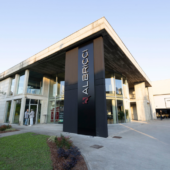If we stopped at wikipedia we could say that Skellefteå is a Swedish town inhabited by just over 70 thousand people in the north of Sweden. Yet this charming Swedish town in recent years has increasingly become a paradigm of sustainability, of attention to the needs not only of the inhabitants, but also of the planet. And if it is true that the Scandinavian countries have often shown us how quality of life and sustainability manage to go hand in hand, Skellefteå is not further proof of this, but a real avant-garde among the avant-gardes.
From houses to parking lots, from bridges to schools, this city just south of the North Pole (excuse the pun) adds skyscraper to its long collection of wooden buildings. 75 meters high, it was designed by the White Arkitekter architecture studio, which has been involved in sustainable architecture for years. In its more than twenty floors there is an art gallery, a museum, a library, bars, restaurants and a hotel.
In short, a fully-fledged eco-sustainable and low-emission attractive center. The choice of wood and glass as main materials, in fact, allows to contain and reduce emissions, while thanks to solar panels it increases energy efficiency.
The construction follows the decision to focus on eco-sustainability and simplicity. The structure is made up of a series of prefabricated modules in cross-layered laminated wood, stacked around the two elevator compartments, all without concrete, without steel or cement. Sustainable, because emissions are reduced, simple and fast, because production times have been drastically reduced (the builders have reported that the roadmap has been shortened by a year and a plan was completed every two days) and construction waste practically not produced.
Eco-sustainable and (almost) zero kilometer: the wood used, in fact, comes from trees grown no more than 60 kilometers away.
In short, an example to follow.














